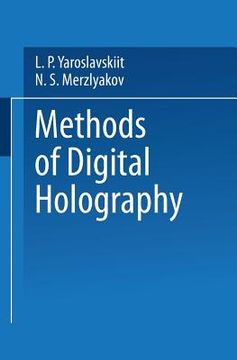Share
Methods of Digital Holography (in English)
Leonid Yaroslavskii
(Author)
·
Springer
· Paperback
Methods of Digital Holography (in English) - Yaroslavskii, Leonid
$ 52.09
$ 54.99
You save: $ 2.90
Choose the list to add your product or create one New List
✓ Product added successfully to the Wishlist.
Go to My WishlistsIt will be shipped from our warehouse between
Monday, June 24 and
Tuesday, June 25.
You will receive it anywhere in United States between 1 and 3 business days after shipment.
Synopsis "Methods of Digital Holography (in English)"
Digital holography is the analysis and synthesis of wavefronts by means of digital computers. Here "analysis" means the construction of images of objects and the measurement of their physical characteristics by recording and measur- ing the wavefronts scattered by these objects. The "synthesis" is the reconstruc- tion of a wavefront of an object which is specified numerically. Problems involving the analysis and synthesis of wave fronts arise frequently in modem science and engineering. These are the problems encountered in the use of electromagnetic and sound waves to peer into the interior of various objects, the problems of the visual display of information in general, and the problems of measuring the characteristics of radiating systems, devising optical apparatus for signal processing, and developing hybrid electrooptic computer systems. Solutions are being sought for these problems through research in holography. The use of digital computers to analyze and synthesize wavefronts is an alternative to the analog methods, which include the methods of physical holography. The digital approach potentially has the advantages which are inherent in the digital technique for signal processing: the processing is highly accurate and absolutely reproducible; the characteristics of the processing or the processing algorithm itself can be changed in a simple way; complicated nonlinear and logic conversions can be carried out; the results are accessible; and it is easy to modify the process at any stage. Digital methods are particularly suitable where quantitative results are required.
- 0% (0)
- 0% (0)
- 0% (0)
- 0% (0)
- 0% (0)
All books in our catalog are Original.
The book is written in English.
The binding of this edition is Paperback.
✓ Producto agregado correctamente al carro, Ir a Pagar.

